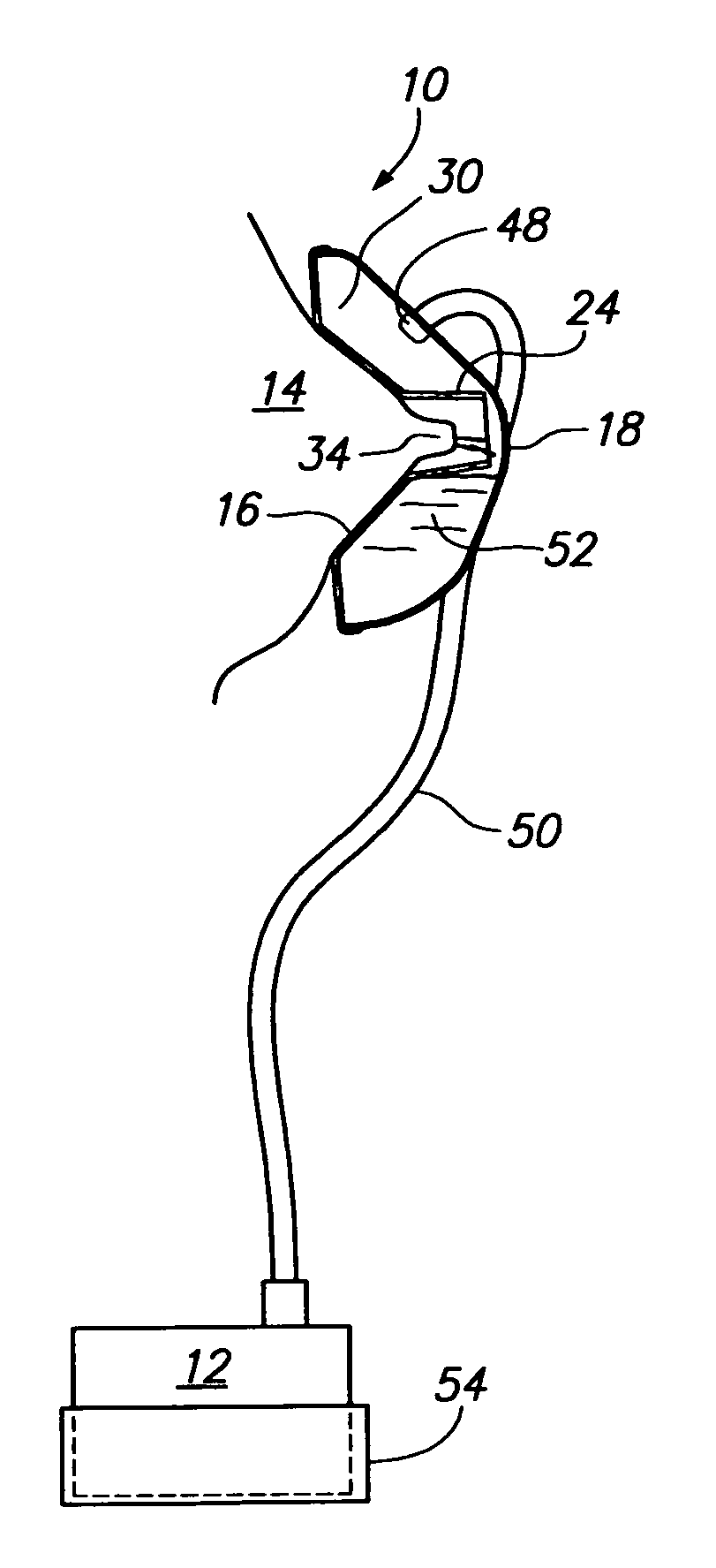Breast pump device with self-contained breast milk reservoir
a breast pump and self-contained technology, applied in the field of human breast milk collection devices, can solve the problems of many challenges in implementing breastfeeding, newborns may require up to 45 minutes per feeding, and no infant formula can completely replicate the composition and benefits of human breast milk
- Summary
- Abstract
- Description
- Claims
- Application Information
AI Technical Summary
Benefits of technology
Problems solved by technology
Method used
Image
Examples
Embodiment Construction
[0058]The inventive device dramatically improves the feasibility of pumping breast milk for women by allowing for the use of a breast pump at a stationary place in the workplace, in a vehicle with a power adapter, or other public places with a minimum of interference or immodesty, and relatively minor disruption in these settings compared with the current state of the art for mothers who pump breast milk. Also, by eliminating the pump, the present invention can function as a passive breast milk collection device.
[0059]Referring to FIGS. 1 and 2, the inventive device 10 is shown attached to a woman's breast with a pump 12 attached in a typical breast milk collection mode. As shown, the device 10 includes an adaptor 16 within which the breast 14 is inserted, the adaptor 16 opening into a reservoir 18 which collects breast milk being expressed from the breast 14. The adaptor 16 includes a funnel, which is a shape that has been found to accommodate a wide variety of breast shapes and si...
PUM
 Login to View More
Login to View More Abstract
Description
Claims
Application Information
 Login to View More
Login to View More - R&D
- Intellectual Property
- Life Sciences
- Materials
- Tech Scout
- Unparalleled Data Quality
- Higher Quality Content
- 60% Fewer Hallucinations
Browse by: Latest US Patents, China's latest patents, Technical Efficacy Thesaurus, Application Domain, Technology Topic, Popular Technical Reports.
© 2025 PatSnap. All rights reserved.Legal|Privacy policy|Modern Slavery Act Transparency Statement|Sitemap|About US| Contact US: help@patsnap.com



